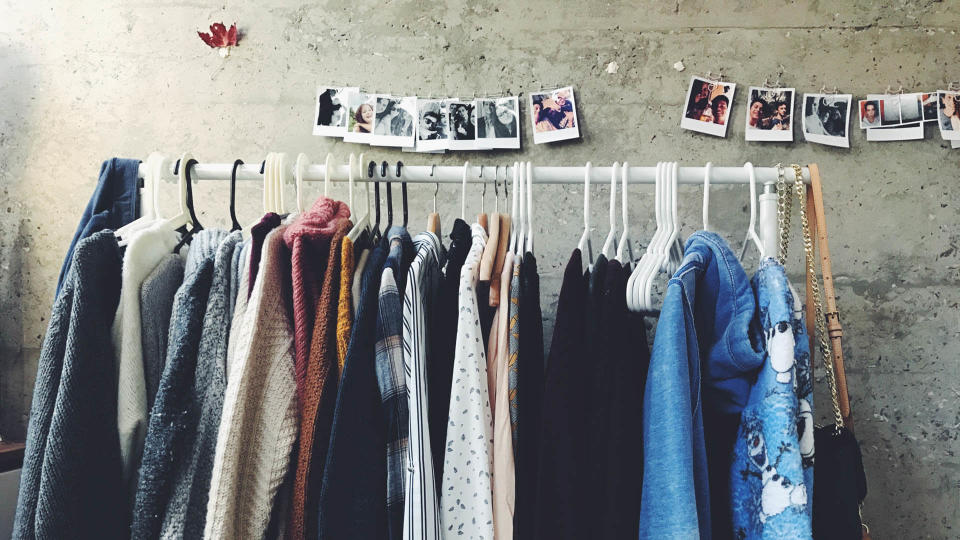Side-Hustle Lessons From Running My Own eBay Store

My first foray into the side-hustle business started with an eBay store selling clothing, shoes and accessories. It started with items in my closet, due to an expensive shopping addiction I was finally ready to face.
This eBay store helped me understand what it took to have a side gig and taught me some valuable lessons in the process. These are the five biggest lessons I learned from selling on eBay.
Read More: Side Hustle to Full-Time: How I Became a Six-Figure Freelancer
It Took a Lot More Time Than I Thought It Would
While the excitement of making side money was fun, I quickly realized that it ate up a big chunk of my free time. I was already working a full-time job, so managing my time efficiently at work and home was sometimes a challenge. I woke up earlier each morning and spent about an hour on competitive research, social media, answering customer questions and sometimes troubleshooting. For example, every now and then a customer would not receive an item, despite what the USPS status said. Small tasks like that added up.
I’d get home from a long day at the office and have to jump back on my computer to answer more questions. I spent whole weekends taking photos of my items and posting them, as well as working on strategies to get repeat visitors and adding customers to a monthly newsletter. A lot of time also went into packing and shipping items.
More on Being Spread Thin: Tips to Keep Your Sanity While Working Two Jobs
I Took Advantage of What Competitors Weren’t Doing
An online sale (especially for clothing) lives and dies by the quality of the photos. Earlier in the year, I happened to purchase a high-quality camera and put it to good use with my store. I examined the photos and descriptions other eBay sellers were using and made mine even better.
I purchased a mannequin on Craigslist for $50 and used that to model the clothing. I also laid the clothing flat on the floor with a tape measure in the photos to show the measurements (i.e., the sleeves, length, shoulder width). If I sold accessories, I included a recognizable item in the photo (such as a quarter or penny) to give browsers a better understanding of the size. The descriptions I wrote included ideas of how to wear the item and if it was a really expensive item (like a handbag), I gave an explanation of why I was letting it go.
Sometimes Inventory Didn’t Sell and Profits Were Down
After a few months, I sold everything I didn’t want from my closet. This motivated me to keep going, but it also meant I was now shopping purposefully for more inventory.
This part was tricky because sometimes items just wouldn’t sell. It’s one thing if it’s already in your closet and doesn’t sell; it’s another when it’s purchased as inventory. It became a lot more stressful because I didn’t want my tiny Brooklyn apartment filling up with more stuff.
For items that didn’t sell, I would either mark down the price or remove it for a while, before adding it again as a new listing. Other times, I would retake photos or change up the description.
Even though I devised strategies to help, it didn’t always work. It ate into my profits, and I had to simply take a loss. I learned that not every month would be profitable.
Too Much Junk on Your Hands? Why Paying for a Storage Unit Is Always a Terrible Idea
There Will Always Be Unhappy Customers (and Other Headaches)
I remember my first negative review. It was from a customer who was upset about the fact that I didn’t accept returns, even though it was clearly stated on my store policy. Negative reviews are always hard, but especially when they’re unwarranted.
The constant customer questions became a headache. I tried to mitigate them by being as detailed as possible in my photos and descriptions but learned customers just seem to have random questions regardless, like “Will this fit my daughter?” Many of their questions were already answered in the listing description, which told me they weren’t bothering to read it. Plus, more often than not, these inquiries didn’t result in any sales.
Stop and Assess
Generating income from my eBay side hustle meant sacrificing a lot of time and energy. After about a year, I stopped to assess my situation. The time it took for me to source items, list them and mail them just didn’t seem worth it to me when compared to the profits.
I also knew I wasn’t dedicating enough time and resources to grow the business into something viable. Since quitting my eBay store, I’ve explored other side hustles, including an Amazon store, consulting and freelance writing — all of which have proven to be better ventures.
Discover: Money Matters: How Do I Find a Good Side Hustle?
A Priceless Side-Hustle Experience
Was it worth it? Absolutely. Having an eBay store was a terrific way to earn extra income, and I learned what it took to sell online and manage my “side-hustle time” efficiently. I used the income I made for an emergency fund, paying off credit card debt and even going on a few trips.
Another benefit from selling my unwanted stuff was being able to experience the extra space in my closet. I liked it so much, I majorly scaled back on shopping. In a way, it fueled my desire to ultimately live a more simple and minimalist life.
Read More: Why This Author Decided to Downsize
More From Our Smart Money Squad:
This article originally appeared on GOBankingRates.com: Side-Hustle Lessons From Running My Own eBay Store
